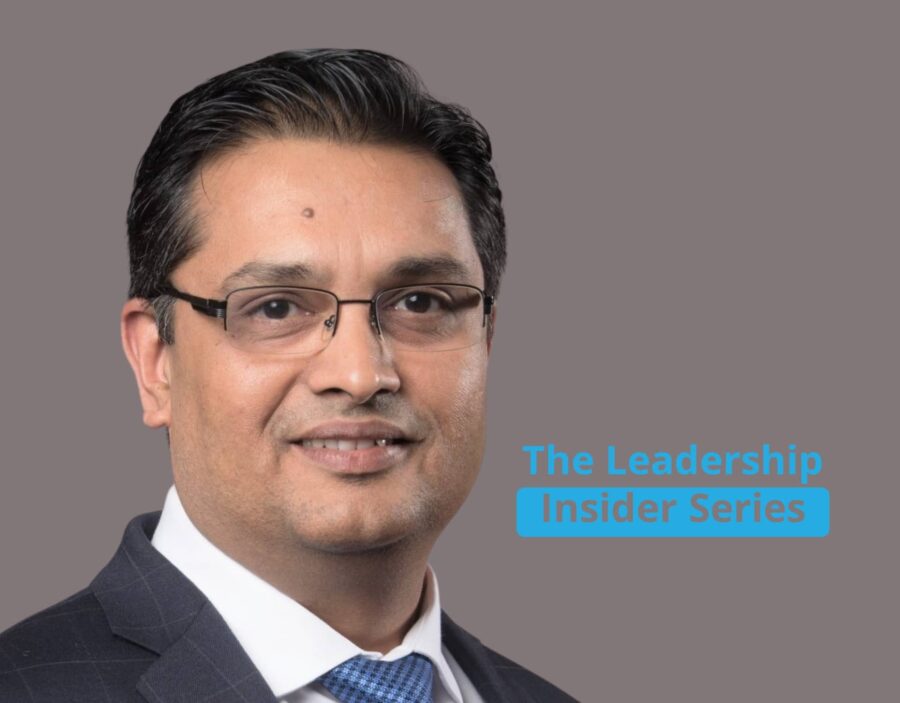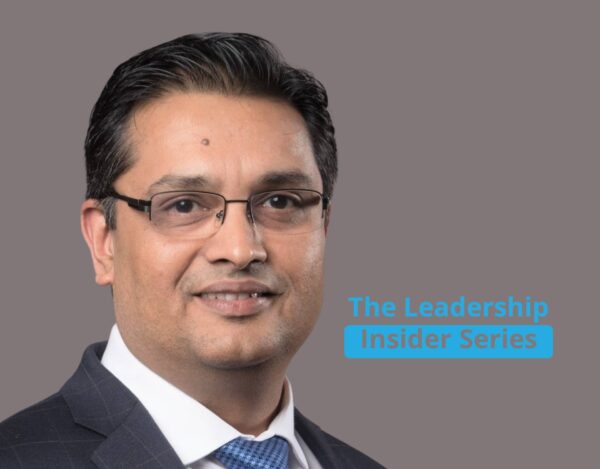
We are thrilled to bring back The Leadership Insider series with an engaging interview featuring Sameer Pagnis, CEO of Bharat Forge’s international business.
Following a short break during which we highlighted remarkable women leaders, Margaret Jaouadi explores Sameer’s leadership journey. She delves into what, in his view, are the top three leadership skills required by future leaders to thrive in this evolving world and why and what shaped him as a leader. Furthermore, Sameer provides insights into his transition into the C-suite and offers valuable advice for executive recruiters, emphasizing the importance of authenticity and humility in identifying future leaders.
Special thanks go to Adam Nuzie, Group Chief Commercial Officer and Managing Director, Americas at Pacific International, for introducing Sameer Pagnis to Margaret Jaouadi.
Margaret Jaouadi
Could you please introduce yourself and tell us about your leadership journey, Sameer?
Sameer Pagnis
Thank you so much for your time today, Margaret. It’s truly a pleasure to delve into this topic with you. You see, I grew up in India, and I’ve dedicated over three decades to the field of electronics engineering. My journey began with a Japanese company, where we were immersed in the world of VCRs. Ah, those nostalgic days of VHS cassette players.
Then came my venture with a Dutch company, focusing on defense electronics. This experience led me to the Netherlands, providing invaluable exposure to the global landscape outside of India. It was a pivotal moment that broadened my horizons and fuelled my aspirations for the future. Joining AMP in 1998 marked another significant chapter. Through its evolution into Tyco and eventually TE Connectivity, I dedicated a quarter-century of my career there.
During my time at TE Connectivity, I traversed various roles, spanning supply chain, engineering, plant management, sales, and marketing, and ultimately transitioning into leadership positions as a general manager. Over the years, I undertook five distinct general manager roles across different regions and global businesses, managing P&Ls ranging from $100 million to $7 billion. A particularly intriguing stint was my tenure as Chief Strategy Officer for the Enterprise when it comprised ten business units with a total revenue of $14 billion.
Recently, I embarked on a new adventure as the CEO of Bharat Forge’s international business, a forging company—a realm entirely unfamiliar to me. And therein lies the excitement. The novelty of the role promises continuous learning and growth. Embracing new technologies and processes keeps one youthful, for every day brings fresh insights and challenges to conquer. That’s what truly excites me at this juncture in my career.
Margaret Jaouadi
I’m certain our audience would love to delve deeper into your transition from operations to leadership. Could you shed some light on how you made that leap? Did you actively express interest in taking on leadership roles, or were you identified for your specific qualities? Was it a deliberate decision on your part to develop in that direction, perhaps through self-education or by seeking out specific projects?
Sameer Pagnis
There are two parts to your question. Firstly, regarding my tendency to embrace new opportunities, my hand has always been raised, and it remains so. I am inherently drawn to challenges and fresh experiences. This inclination stems from my eagerness to learn, to test myself, and to broaden my horizons. The allure of new opportunities lies in the potential for growth and discovery, making them perpetually fascinating to me. I have a bias towards accepting such opportunities—I rarely decline.
The second aspect pertains to my transition into general management. I must confess, I didn’t meticulously plan my career trajectory. However, what drove me was an innate desire to make a tangible impact and deliver value. This urge wasn’t as apparent to me two decades ago, but as I navigated through various functions—whether it be supply chain, manufacturing, sales, marketing, or engineering—a passion for adding value to all stakeholders emerged.
I realized that to truly make an impact across customers, employees, and shareholders, a general management role was the most conducive. It allowed leading leaders, to foster alignment and drive significant, enduring change. It allowed me to leave a meaningful legacy across all dimensions of the business. Once I embarked on this path, it was very clear to me that this is what I want to do for the rest of my life.
Margaret Jaouadi
Having collaborated with many diverse leaders and of course, being one yourself, could you please share the top three qualities that you find crucial for future leaders to be successful?
Sameer Pagnis
Margaret, my perspective on what defines a good leader has evolved significantly over time. Initially, about 15 years ago, I held this somewhat naive notion that a leader should possess omniscience and omnipresence. They were expected to have all the answers, exhibit absolute clarity, and understand everything. However, my viewpoint has shifted dramatically since then. Now, I lean toward the opposite end of the spectrum.
I’ve come to realize that leaders don’t need to know everything, and it’s perfectly acceptable not to. It’s natural. What’s also changed during my evolution is the landscape of how companies and businesses operate. With the advent of diversity, inclusion, and global thinking, most companies have expanded globally and have access to top-tier talent. Intelligence quotient-wise, we have exceptionally smart and capable leaders at our disposal. The amount of information and data available now is unprecedented compared to 20-25 years ago, altering the expectations of leadership.
Previously, a leader was expected to know what to do in any given situation, drawing from experience and expertise. However, with the abundance of information, analytics tools, and access to great talent, the role of leadership has shifted. Now, what’s paramount are the fundamental characteristics of leadership: humility, resilience, and a visionary mindset.
Humility is reflected in one’s willingness to listen, make the best of available information, and accept when they may be wrong. Authenticity is key, as it’s more impactful for people to see their leader as genuine rather than someone who pretends to know everything. It takes courage to admit mistakes and change direction accordingly.
Resilience has become increasingly vital, particularly in the face of recent global challenges such as pandemics, natural disasters, and conflicts. Leaders must exhibit fortitude while also being open to adaptation. They must inspire resilience within their teams, recognizing that tough times will eventually pass.
Lastly, leaders need to possess a reality distortion field, as I like to call it. This involves having a bold, audacious vision and the ability to inspire the team to believe in it. Sometimes, the vision may seem unrealistic, but it’s about rallying the team around a common goal and empowering them to make the seemingly impossible possible.
In a rapidly evolving world full of unprecedented opportunities, leaders must embody these characteristics to navigate uncertain terrain and lead their teams toward success.
Margaret Jaouadi
Given the evolving nature of leadership, how can executive recruiters effectively identify potential leaders who prioritize collaboration, inclusivity, and purpose-driven decision-making over traditional notions of omniscience?
Sameer Pagnis
When conducting interviews, my focus shifts beyond the impressive resumes that candidates bring to the table. While experience certainly plays a role in determining suitability for the job, what truly sets candidates apart are their underlying qualities: their talent, their willingness to embrace vulnerability, and their authenticity.
In conversations with candidates, I focus on these defining characteristics. I observe how they speak about their achievements—do they exhibit humility, acknowledging the contributions of others? Or do they solely emphasize their accomplishments? I pay attention to their language—how frequently do they say “I” versus recognizing the collective efforts of a team? Do they openly discuss their mistakes and the lessons learned from them, or do they avoid acknowledging failures altogether?
Furthermore, I value candidates who demonstrate a genuine pride in nurturing talent and empowering others. Are they proud to have mentored individuals who have risen to leadership positions? Are they comfortable admitting when someone else possesses superior knowledge in a particular area? Do they view failure as an opportunity for growth and learning?
Ultimately, I’m drawn to candidates who exhibit inclusivity and authenticity. Rather than being overly confident or assertive during interviews, I’m more impressed by individuals who display humility and a collaborative mindset. It’s these qualities that I believe are indicative of how a leader will show up on the job—embracing diversity of thought, fostering teamwork, and being open to continuous learning and improvement.
Margaret Jaouadi
Could you share your insights on transitioning into the C-Suite? Specifically, how does this change impact an individual’s role and perspective within the organization?
Sameer Pagnis
There is a difference between managing and leading. It’s a thought that becomes clearer the more you ponder it, evolving continuously in your mind. In any organization, there’s always a blend of both managing and leading, but as you ascend to the C-suite, the emphasis should shift.
I believe that the managing portion diminishes while the leading portion expands. If it doesn’t, there’s a problem—it means you haven’t assembled the right team, or you haven’t entrusted them with the right responsibilities. As Steve Jobs famously said, “Why hire great people and then tell them what to do?” It’s counterproductive. Instead, you empower your team, you challenge them, you support them, but you don’t micromanage.
Leading, from my perspective, begins with a vision. It’s about envisioning value not just for shareholders, but also for customers and employees. While shareholder return is important, it’s insufficient as a sole focus. True value creation stems from understanding and serving the needs of customers, innovating for them, and contributing to their success. Similarly, investing in employees’ careers, and providing fulfilling and enriching opportunities, are integral to holistic value creation.
Building a culture that embodies this vision is crucial. It’s not about one person’s impact but rather fostering a collective chain reaction throughout the organization. Additionally, strategic direction is paramount. In today’s dynamic landscape, there are always multiple paths to consider. While some decisions may prove right and others wrong, having a clear strategic direction helps align resources and talents toward common goals.
Imagine the potential when thousands of individuals are aligned under one strategic umbrella—it’s a formidable force for progress. However, the flip side is equally true. Without a cohesive strategic direction, chaos ensues. Hence, effective leadership at the C-suite level entails not only envisioning a strategic path but also effectively communicating and aligning the organization toward it.
Margaret Jaouadi
And now the last question Sameer, what is the most significant thing from your past that shaped you as a leader?
Sameer Pagnis
You know, I anticipated you might challenge me with that question, but countless factors shape you over time. However, if I were to pinpoint the single most significant one, it would be the realization—simple yet profound—that everyone has the same 24 hours in a day.
Let me explain why I emphasize this. There was a phase in my career where I firmly believed that working harder and longer was the key to solving problems and overcoming challenges. While diligence and perseverance are undoubtedly crucial, I came to realize that time is a constant factor. No one has more than 24 hours a day.
So, what truly sets successful teams apart? It’s not just about intelligence or experience, as most companies have access to similar talent pools. Rather, it’s the collective energy within the team that distinguishes their accomplishments and pace of progress. This understanding dawned on me recently, particularly during the challenges posed by the COVID-19 pandemic.
When everyone shifted to remote work overnight and faced disruptions in communication and supply chains, I observed that the energy of my team became our competitive advantage. I believe I contributed to fostering this energy through various means. Clear and authentic communication, even in virtual settings, played a pivotal role. Employees need to see their leader, even if it’s through a screen, and feel heard and valued.
Furthermore, energy is nurtured through alignment—ensuring everyone is working towards the same strategic goals. Yet, perhaps most fundamentally, it stems from cultivating a culture of trust and respect. When team members feel their voices are heard and their contributions respected, it fuels their motivation and energy levels.
In every interaction, whether in meetings or daily exchanges, the atmosphere of trust and respect significantly impacts the team’s energy. This realization has become a cornerstone of my leadership philosophy, emphasizing the importance of preserving and fostering team energy in any situation.
Margaret Jaouadi
I agree, that trust is key. Thank you, Sameer, it’s been a pleasure talking with you.
For a confidential chat about how Pacific International can assist you with your Talent Acquisitions and Diversity challenges, please contact Adam Nuzie or one of our Executive Search Consultants specializing in your sector.
Recent posts

Navigating Tomorrow: 3 Leadership Skills to Succeed in the Age of AI by Sameer Pagnis
We are thrilled to bring back The Leadership Insider series...

Can AI and Emerging Technologies Expedite Mental Health Care Transformation?
The William Templeton Foundation for Young People’s Mental Health (YPMH)...
